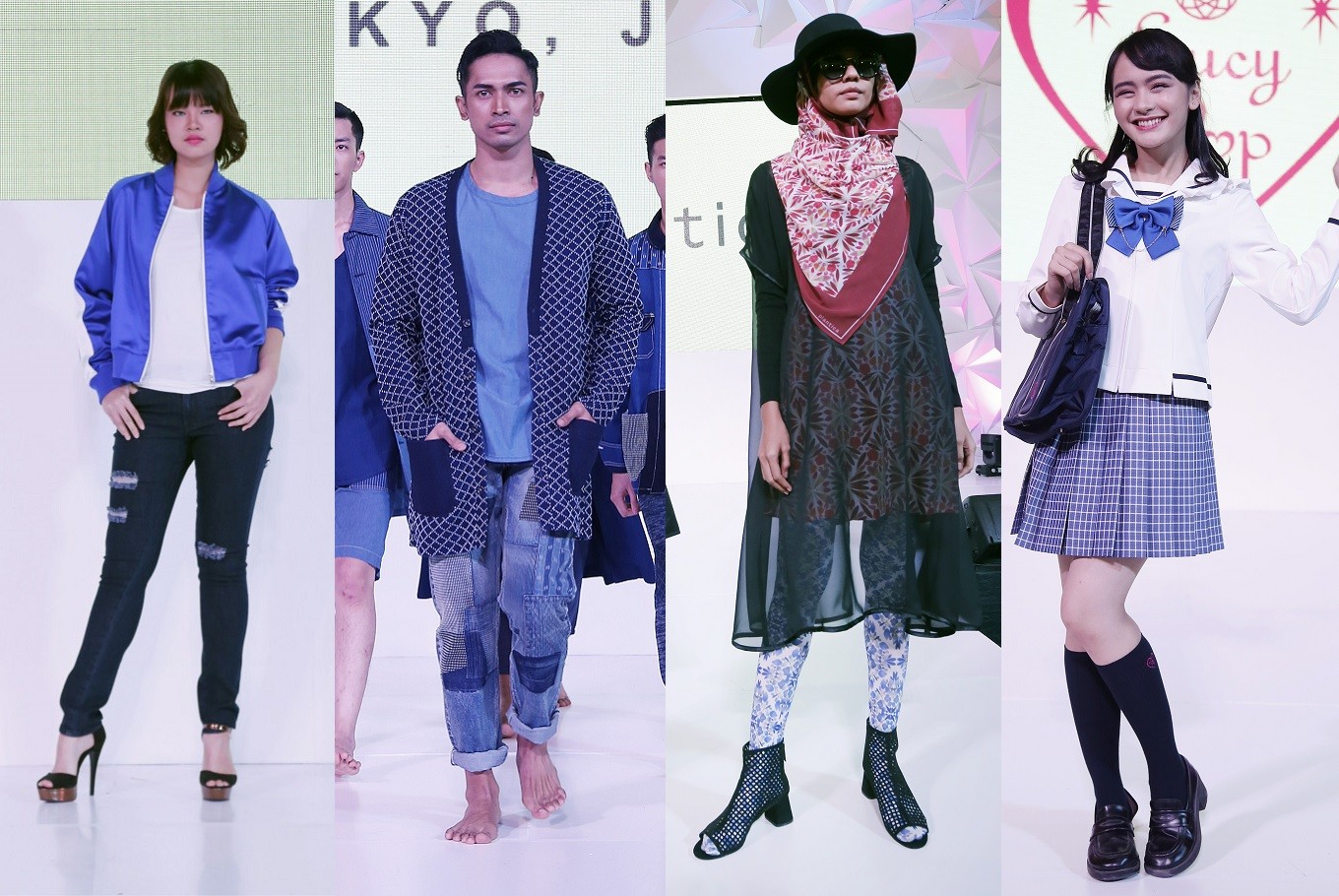Popular Reads
Top Results
Can't find what you're looking for?
View all search resultsPopular Reads
Top Results
Can't find what you're looking for?
View all search resultsJapanese Indonesian fashion fusion
Japan and Indonesia enrich their fashion references and cultures in an event that promotes collaborative works between local designers from both countries.
Change text size
Gift Premium Articles
to Anyone
B
ilateral economic and cultural cooperation can be undertaken in many ways. Apart from traditional arts, pop culture is a very effective entry point to strengthen a relationship between two countries as it is close to rapidly adapting young people. This kind of bilateral cooperation can be built through movies, music, reading and games, as well as derivatives like food and fashion.
The Japan External Trade Organization (JETRO), a Japanese government-related organization that promotes trade and investment, is one of the institutions that sees pop culture as an opportunity to strengthen Japan’s cultural connections with other countries. In Indonesia, JETRO believes that a cultural connection introduced via pop culture is an important strategy to promote Japanese fashion to Indonesia’s youngsters.
In its latest project, JETRO has invited 21 Japanese fashion brands to visit Indonesia so they can introduce them to the public in a fashion exhibition.
“None of them have been sold in Indonesia yet but they’re no longer new to some Indonesian aficionados of Japanese culture,” said Daiki Kasugahara, JETRO Indonesia president director.
He noted that Indonesians were familiar with Japanese fashion through comics, anime and TV dramas. The rise of Japan’s influence in local fashion had also been felt with an increasing number of Indonesian tourists visiting Japan thanks to affordable costs and easy procedures, he added. For the fashion event, JETRO is cooperating with Tokyo Girl Collection, a routine fashion festival in Japan.
Read also: Didiet Maulana offers tips on designing traditional wedding attire
“While so far only the Japanese have been able to enjoy our shows, now we’re bringing them to Jakarta,” said Noriyoshi Murakami, a representative of Tokyo Girl Collection.
The fashion event has invited Indonesian designers to collaborate and create new collections for the enhanced acculturation of both nations. The event also provides an opportunity for aspiring local models to enter the fashion world.
The Japanese fashion brands participating in the event are mostly casual and use different designs and fabrics. Among them are Denim Close with its denim dominance and Lucy Pop with its preppy look. Other brands, meanwhile, mostly have a Japanese anime look in their designs. FDMTL, one of the men’s brands, has a unique concept for combining the essence of kimono with denim to offer a modern collection without abandoning Japanese culture.
“FDMTL responds to their need for yukata [casual kimono] in a more modern version,” Murakami said, adding many Japanese youths were still fond of wearing yukata. Another impressive brand is Vector, a clothing line using recycled material to produce its outfits. This label makes available casual wear currently preferred by Japanese youths for young men and women.
To respond to Indonesia’s demand for Muslim dress, JETRO also introduced Japanese fashion lines that accommodate women wearing head scarves. Saiga, Plantica, Sayori, Fukusa and Watasi boasted collections for women using head scarves to look more stylish, mostly by adapting broad kimono cloth complete with Japanese flower motifs. Besides attire, Plantica also offers beautiful scarves that can certainly be worn by any women wishing to accentuate their appearance.
Read also: Hijab: A personal choice
Murakami and Kasugahara said they had also cooperated with the (X)S.M.L brand to open pop-up shops in several braches in Indonesia. This brand was chosen for being regarded as having similar ideas to Japanese fashion and covering a wide range of young people as consumers.
Similar collaboration was also expected with local distributors, designers and brands.
One existing example of the fashion collaboration between the two countries can be found in the work of Toton, a young Indonesian designer who uses Japan’s kaji kinran textile for his design.
The Kyoto-based premium textile maker produces kinran woven fabric only found in the Nishijin region. The material, used for centuries for people behind palace and temple walls, is usually a woven combination of silk and golden yarns that give a classic and luxury touch to Japanese culture.
Toton exhibited his latest collection using kinran textile at Dewi Fashion Knight, Jakarta Fashion Week 2017. Toton’s work shows beautiful cultural synergy that not only adds colors to fashion but also favors both Japan’s and Indonesia’s cultural enrichment.











